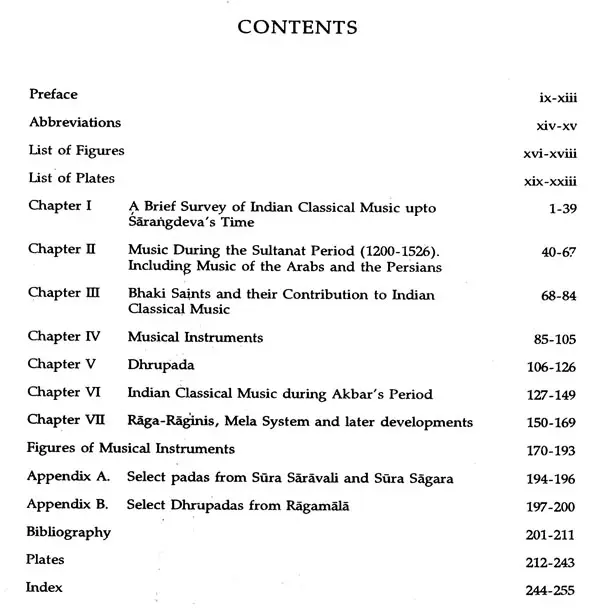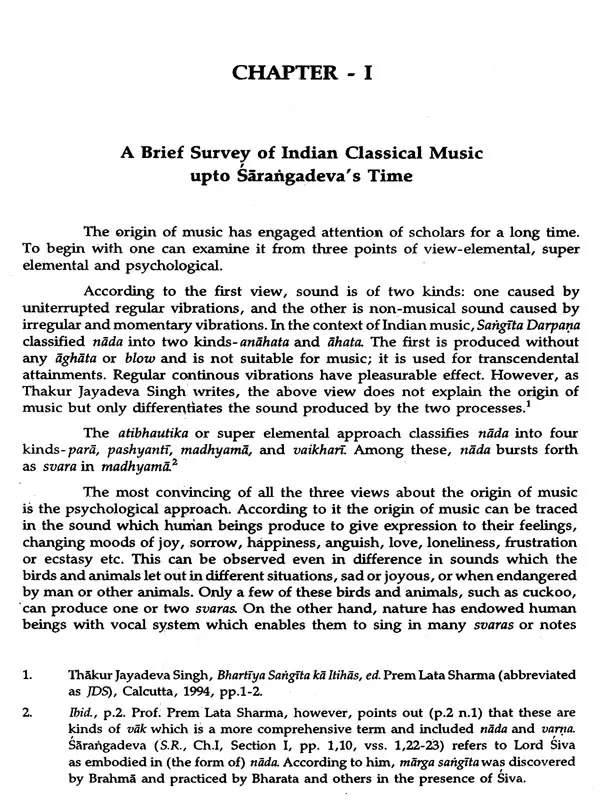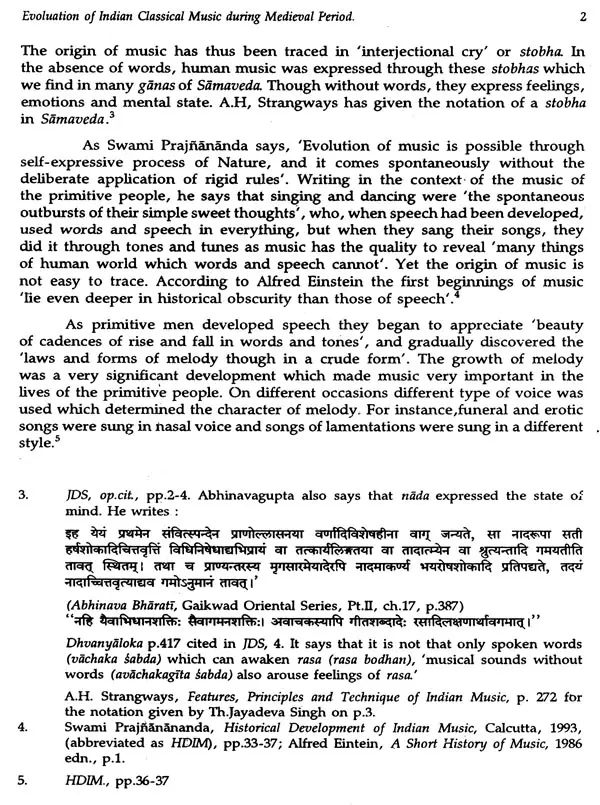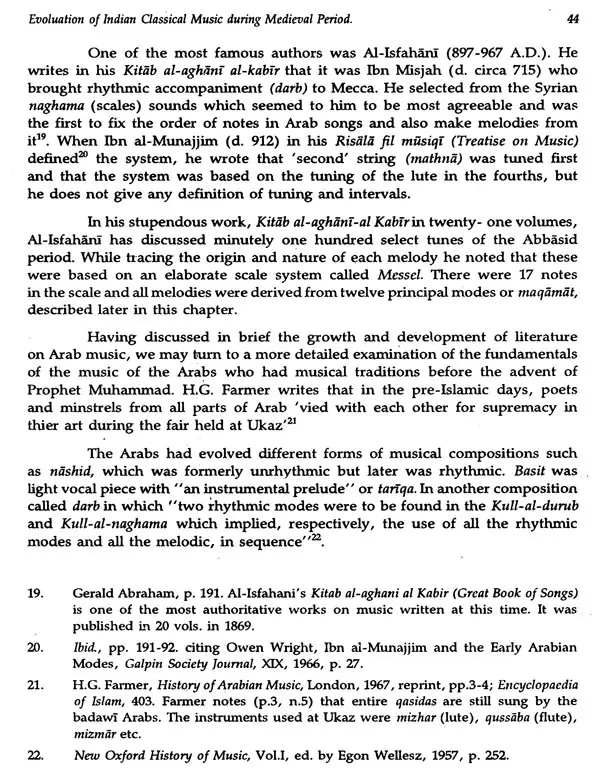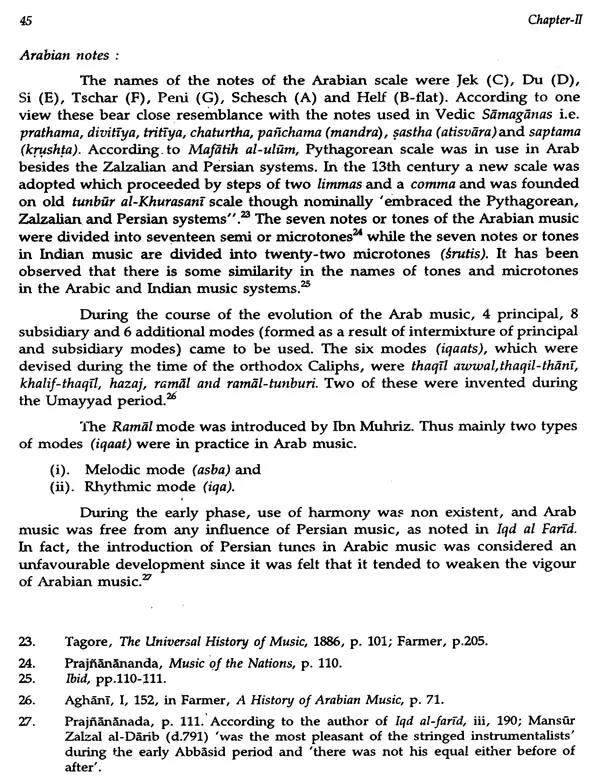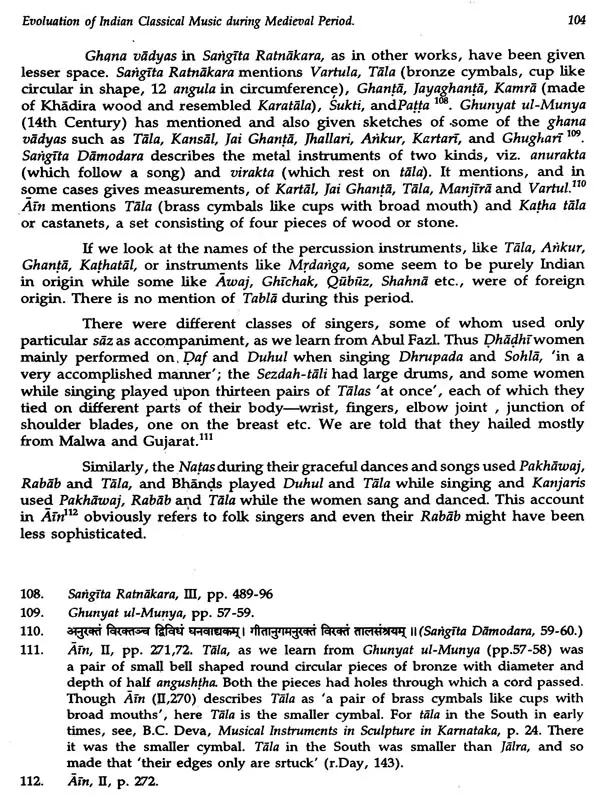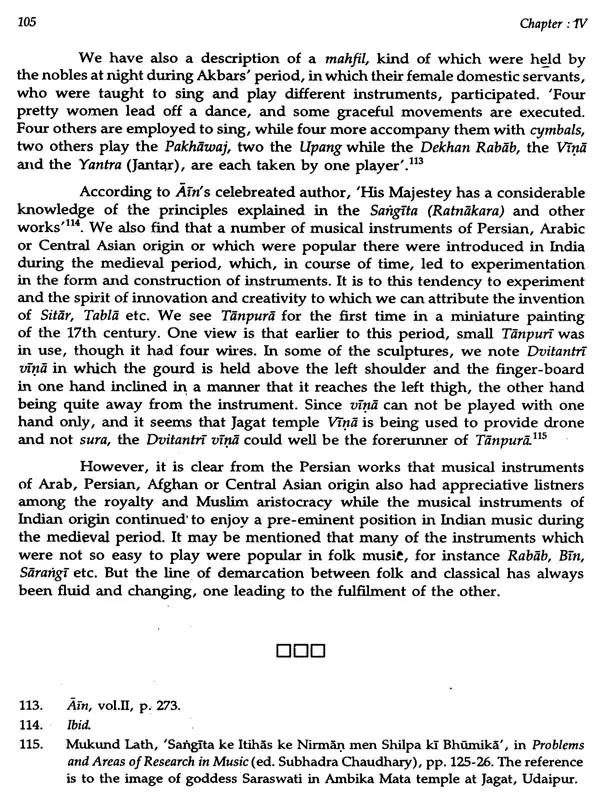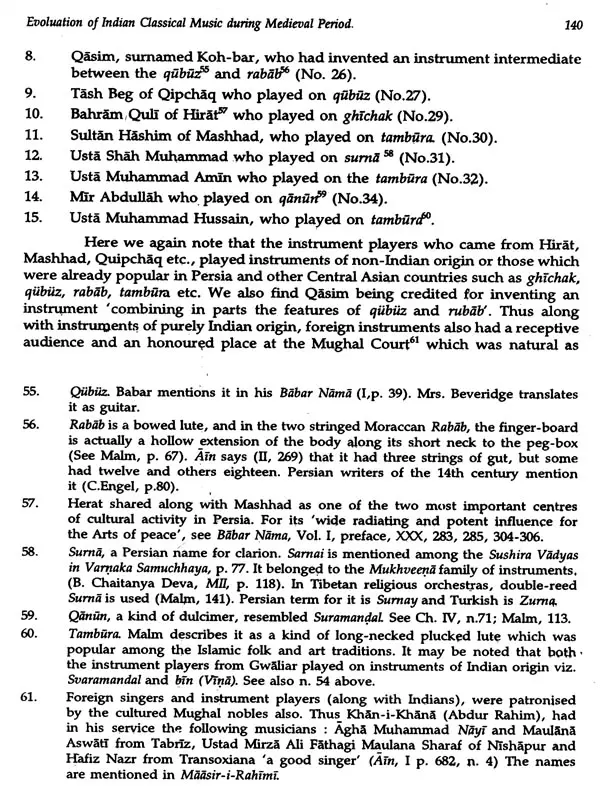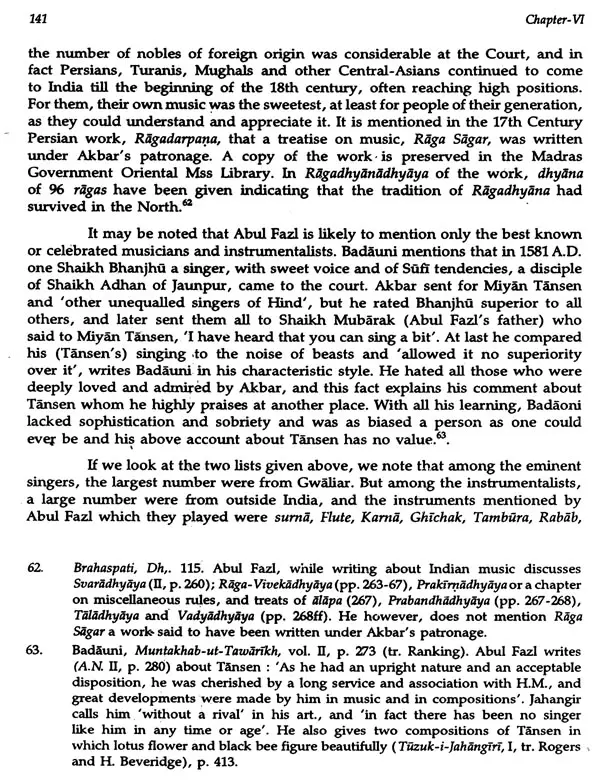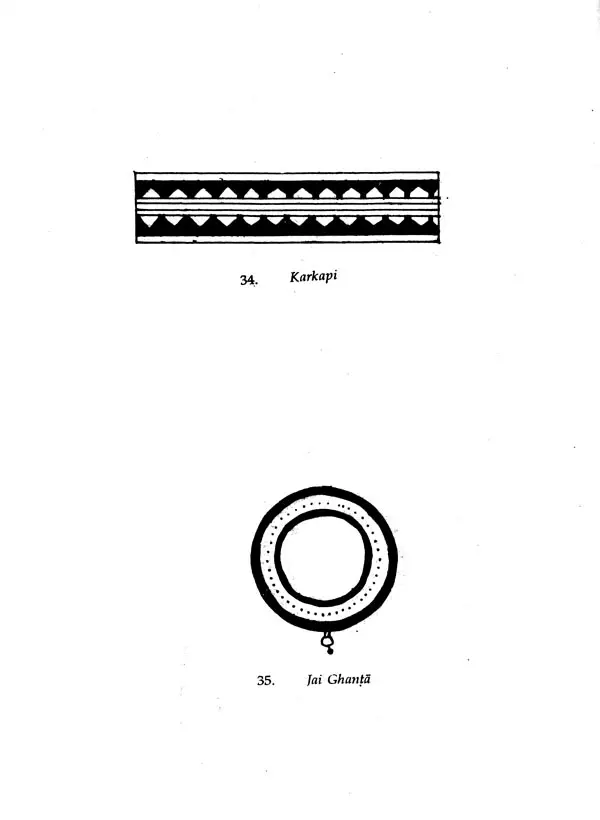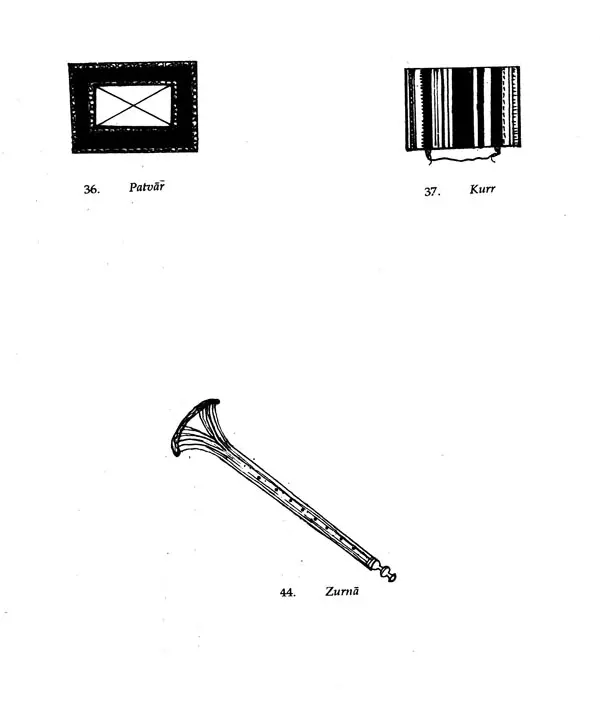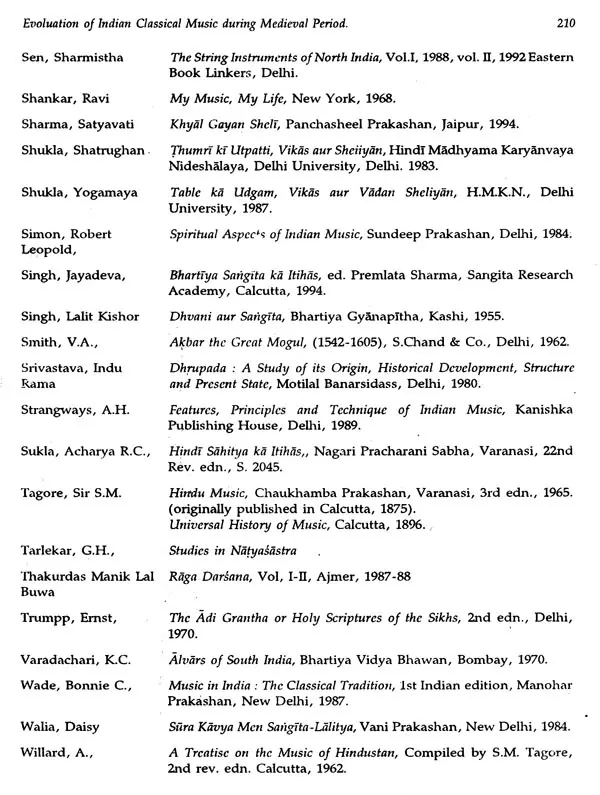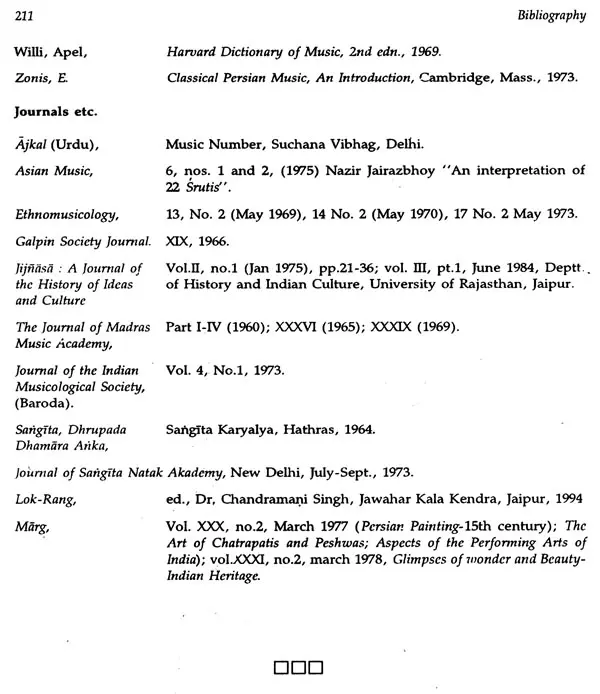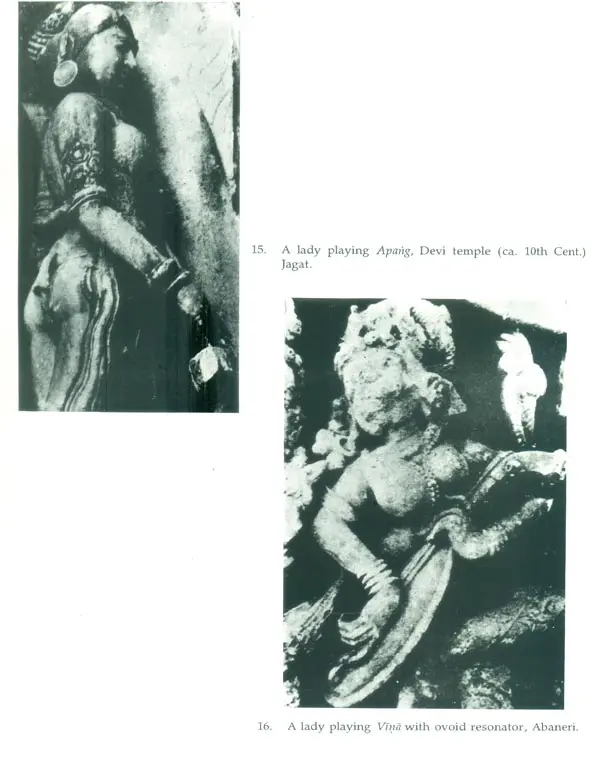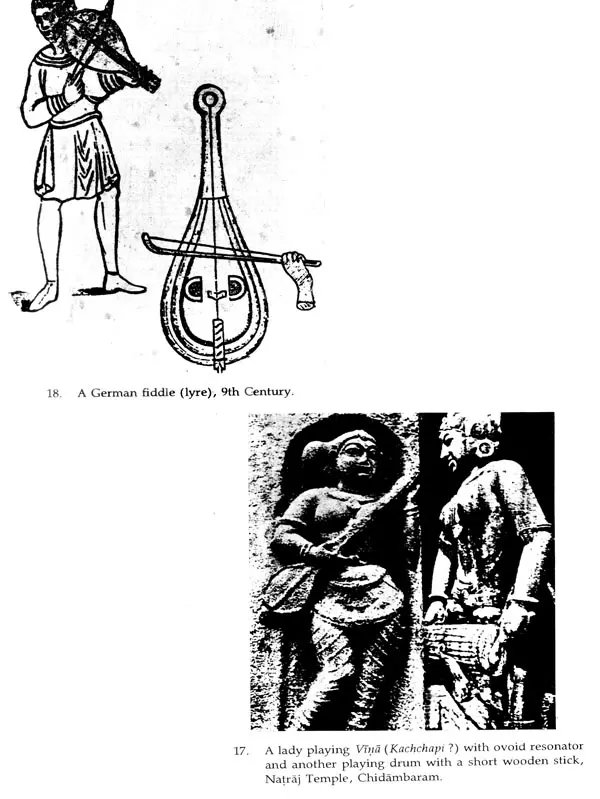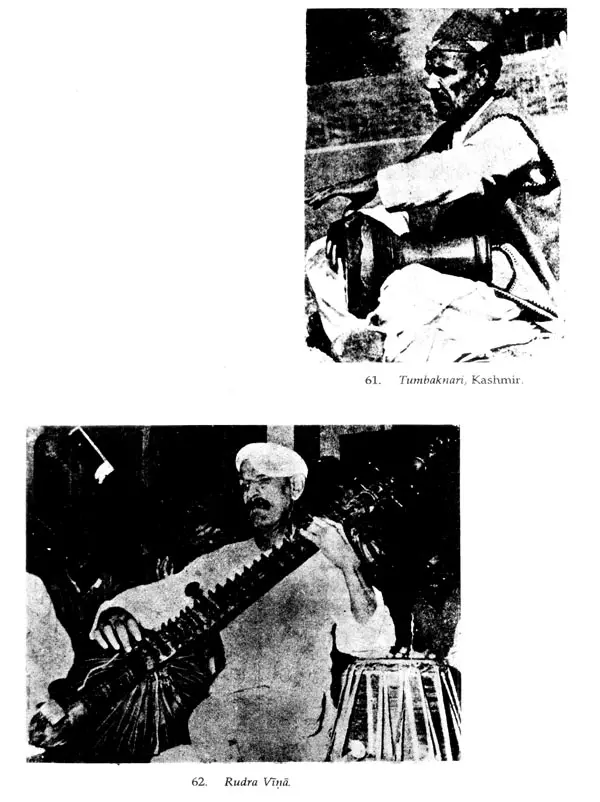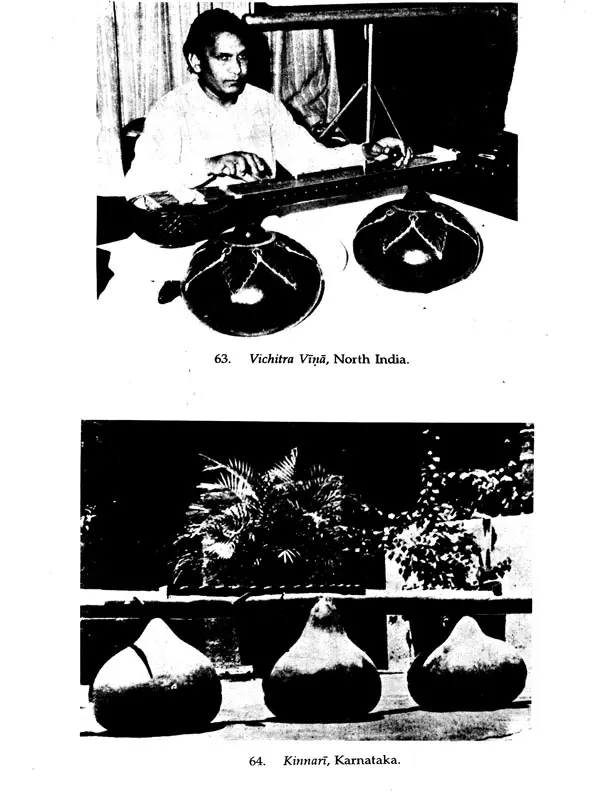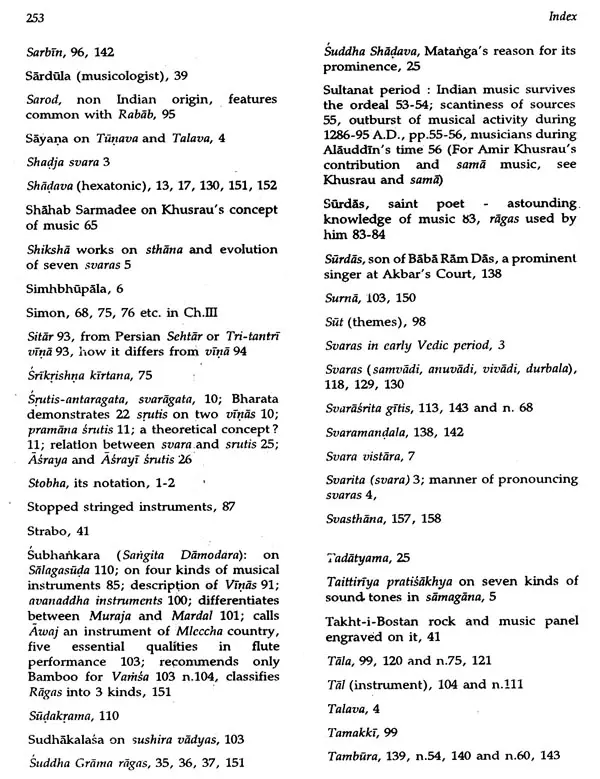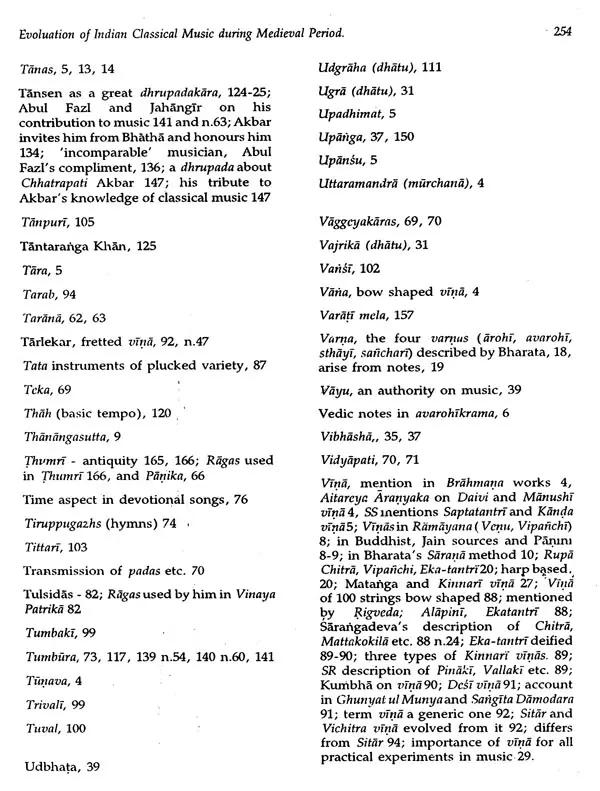
Evolution of Indian Classical Music
Book Specification
| Item Code: | UAD956 |
| Author: | Neerja Bhatnagar |
| Publisher: | Publication Scheme, Jaipur |
| Language: | English |
| Edition: | 1997 |
| ISBN: | 8186782060 |
| Pages: | 274 (Throughout B/w Illustrations) |
| Cover: | HARDCOVER |
| Other Details | 11.00 X 9.00 inch |
| Weight | 970 gm |
Book Description
The book discusses the fundamental concepts of Indian music since Rigveda to Sarangadeva's time (1235 A.D.) in the introductory chapter, treating more elaborately Samagana, Bharata's fatyasastra and the views of Matanga and Sarangadeva by which time Indian music had attained its classical form. By 1200 A.D., the Muslims (Turks, Persians, Arabs, and Central Asians etc.) had overrun a major part of Northern India. The new rulers had brought their own developed music based on the maqam system, treatises on music, and musical instruments. The study of the interaction between the two systems is important though handicapped by extreme meagerness of sources.
In course of time Arab-Persian and Central Asian music lost its separate identity altogether and was merged in Indian music.
The period also witnessed significant contribution of a number of saints in the field of devotional music, evolution of the Dhrupada form, Raga-Raginis, and the development of Mela and Thata systems of classification in the second half of the sixteenth century. At Akbar's court, Dhrupada form was predominant and majority of the vocalists were from Gwalior. Also, a thorough knowledge of Sangita Ratniikara was considered essential for one claiming knowledge of Indian music at Akbar's Court, which was adorned by some of the greatest musicians ever born in India. The book contains a separate chapter on musical instruments during this period.
The end of the sixteenth century' forms a convenient point to stop and survey the course of Indian music and study the various factors which to a greater or lesser extent helped in its evolution and subsequently led to the development of Khyal and Thpmrf etc., which came into their own in the 18th and 19th century. These have been discussed in brief only to show that some of their most important features resembled those of Sarangadeva's gitis.
The book extensively cites from various Sanskrit treatises on music, especially those written during the 10th to the early part of the 17th century, and Persian works like Ghunyat-ul-Munya and Ain-i-Akbarf, besides some excellent works by modem scholars, both Indian and foreign, which have appeared during the past few years dealing with particular aspects of Indian Music. The Chapter VI on the instruments and the illustrations and plates given at the end of the book might be found useful as well as interesting.
Neerja Bhatnagar has a uniformly brilliant career securing first class in all examinations and merit positions in the Board and the University Graduate Examinations. She has published a number of papers in National Journals dealing mainly with the psychological aspects of music. She is now engaged in post -doctoral research on the scientific basis of human psychological responses to different kinds of music, both vocal and instrumental, under varying conditions,. using scientific, psychological, and social research techniques. Cover: Gunagarvitii Nayika(Nayika proud of her accomplishments), Garhwal, ca. 1790.
However, musk, like any creative art, is never static. Hence we find that though the basic' concepts about the Sruti, Graima, Malaccan, Itihas, Svara, Grama-ragas, Gitis, Varna, Tala, Raga, Prabhanda etc. did not change, even from Matanga Mums' time, gram ragas and did sangita begen to influence Indian classical music and new musical forms emerged, gradually replacing the old ones, and the Vaggeyakaras as well as the instrument players continued to create new rigs, music patterns, and instruments to give outlet to their creativity and innovative urge. Thus there was "tremendous upsurge of tile construction" as is evident from the fact that while Bharata mentions only five tiles, by the thirteenth century the number had risen to one hundred twenty. This is also evident from the classical form which various Raga-Ravines had acquired by the end of 16th century, and use of many new instruments which have been discussed in detail in a separate Chapter indicating innovative efforts and new developments in the field of music.
This period i.e. 1200-1600 A.D. synchronizes with the establishment of the Muslims (Turks, Persians, Khorana’s, Tasks, Afghans, and Mughal etc.) as the sovereign power at Delhi. The Muslims had brought with them a sufficiently advanced system of music and a number of musical instruments like Rabab, Quinine, Nay, etc. The fundamentals of Arab-Persian and also Central Asian music, the maximal, the attach etc. form an important part of the second chapter. The Indian music naturally had interaction with the Arab, Persian and Central Asian music at the court of the Delhi Sultans and in the musical assemblies of the nobles and the Princes. We find that in the beginning, the interaction was slow, but gradually, for various reasons which have been discussed at some length, Indian classical music came to acquire a pre-eminent position. At the same time, Muslim music, especially instrumental music, continued to receive patronage of the Sultans, the Mughal Emperors, as well as of such nobles who had come to India only recently. Some new musical forms like Ghazal, One walf, Trainee and some new ragas like Fareast, Bilaural, Hussaini, Turushka , and Gaudi etc. appeared at this time. It will be however a wrong presumption that the musical activity at the Delhi Court, or at the newly founded Sultanates of Jumper, Malawi, Gujarat etc., or in the assemblies of the nobles represented the sole development in the field of music in India during this period. Not only the Bhakti Saints, such as the Alvaras in South, and Jayadeva (12th century), Chandidas, Vidyapati, Chaitanya, Namdev, Nanaka, Mira, Tulsi, Sura and many other saints composed geya padas in different ragas which are mentioned in their songs and in the collection of their compositions, but what is noticeable is that in some of their works, the padas and devotional songs were arranged according to the ragas in which they were to be sung. This we specially note in case of Guru Grantha Siihib and Paiichaodni of the Dadu Panthis. The contribution of the saints in the field of Indian classical music discussed in the third Chapter, was undoubtedly very significant and some of them, such as Surdas, had a very thorough knowledge of Indian music.
How little did the Muslim rule influence the Indian music is evident from the fact that Gwalior, which is so near Agra and Delhi, became one of the most important centres of Indian classical and performing music during the time of the Tamar kings in the fifteenth and first quarter of the sixtenth century, especially during the reigns of Maharaja Dungarendra Singh and Raja Man Singh Tamar (d. 1516 A.D.) who is credited to have been the author of Man Kautuhal and who played a significant role in the evolution of Dhrupada form which was one of the most significant developments and has been dealt in a separate Chapter. It is no mere coincidence that in the list of the great musicians at Akbar's .court given by Abul Fazl in Ain-i-Akbari, we find that the largest number of vocalists, including Tansen, were from Gwalior.
Book's Contents and Sample Pages
